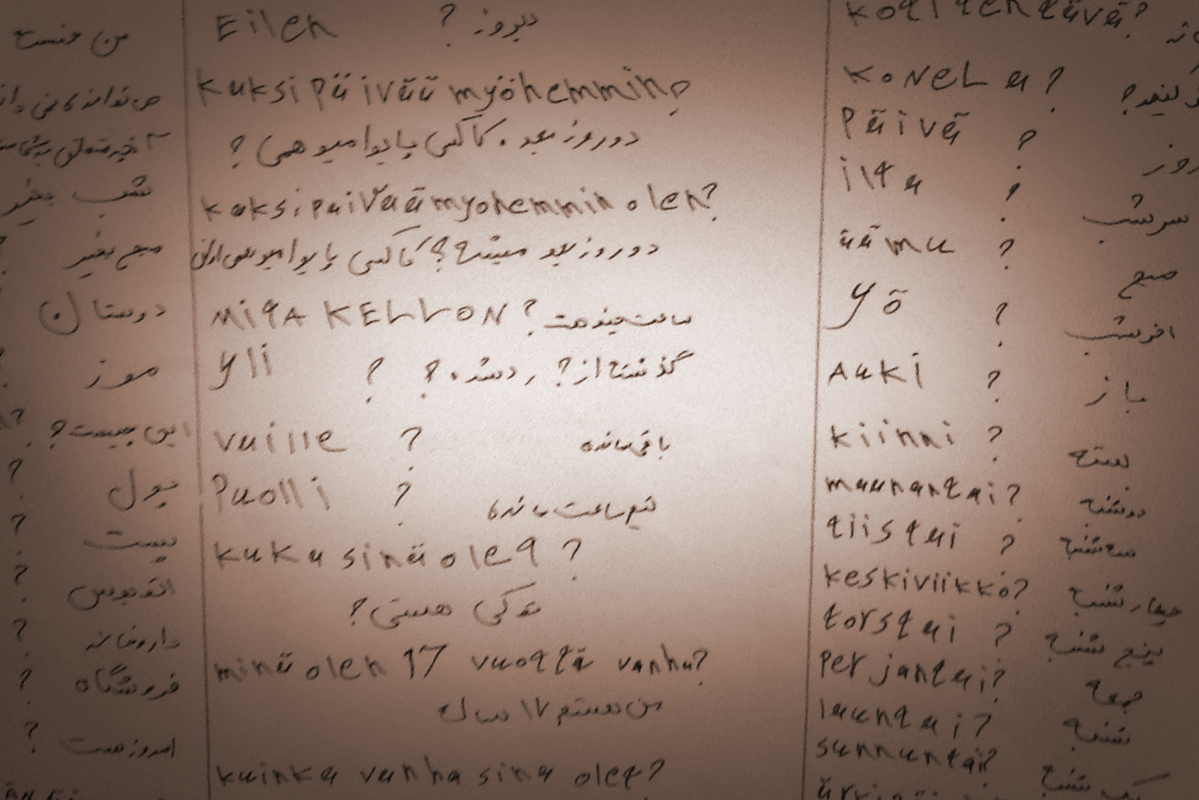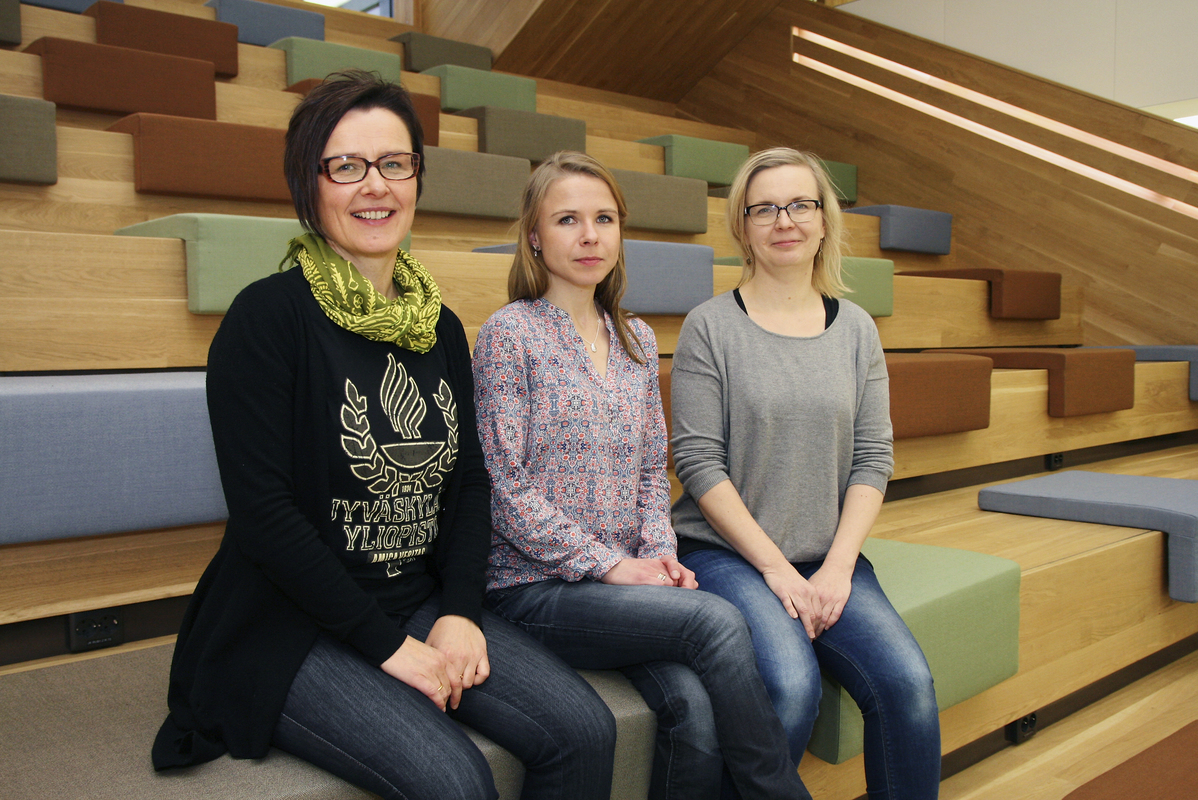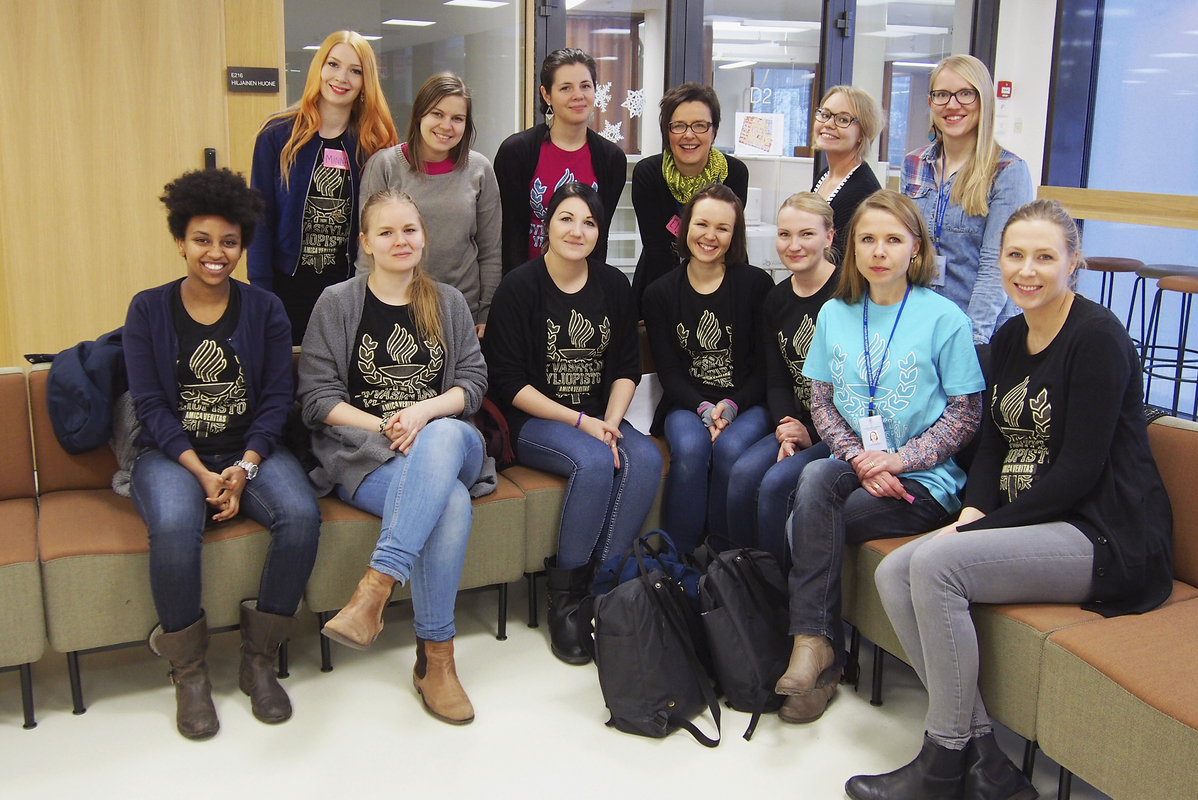Finnish at a reception centre
Teaching and learning Finnish at a reception centre
The high number of asylum seekers arriving in Finland and the increased need for the Finnish language education has woken up the experts also at the University of Jyväskylä. Eija Aalto from the Department of Teacher Education and Sanna Mustonen from the Open University decided to act: Together with their students they began to develop a Finnish language education programme at the Puuppola reception centre, which currently accommodates 120 asylum seekers.
An intensive course on the Finnish language was organised for the residents of the centre in autumn 2015. The course lasted for four weeks and there were three teaching sessions per week. The first stage was taught by the students of the Department of Teacher Education who were specialising in teaching Finnish as a second language. There were also some teachers from the University Language Centre. The project will continue in spring 2016. This time the course will be taught by the students of the Open University who are specialising in teaching Finnish as a second and foreign language.
No traditional teaching models
The teaching at the reception centre is based on a new approach to language and language skills, which differs from traditional school-based language learning. The teaching does not start from separate micro level units of language, such as sounds or letters. Rather than focusing on typical textbook vocabulary, the instruction is linked to the everyday situations the learners encounter.
The planning of the course started from the needs of the residents of the reception centre. What kinds of situations are typical and meaningful at the first stages of immigration? What types of encounters and learning settings do these people have? What kind of language is needed with the daily routines? In planning the course the designers also drew on young immigrants’ experiences of the early stages of learning the Finnish language. This type of expertise makes it possible to tackle also issues foreign to native Finnish speakers.

The framework of the teaching was inspired by a narrative, which consists of everyday situations and dialogues (for example traveling by bus, shopping). The narrative was followed as a continuing story and the learners participated in it by taking different roles. Within four weeks the learners knew how to express basic politeness, feelings, and emotions, as well as to ask questions and speak about time.
Planning the instruction was challenging in many respects. There were no other teaching materials besides pens, papers, adhesive tape, and a few pictures. There was but little pre-information about the language and literacy skills, age, or educational background of the learners. Thus, the course design was based on oral language use and leaning entirely on Finnish. Along the way, the instruction was developed and adapted. For instance, the learners wished to learn some written language as well, which was then included in the course. The most essential thing was to meet the learners as persons with their own individual needs.
Experiences after the first stage
All the participants have found the project as an extremely fruitful experience. From the supervisor’s point of view, language learning theories have been brought into practice and these two aspects have complemented each other. Also the students who participated in the project have described it as a positive experience:
– In addition to experiences with teaching Finnish as a second language, it has been highly enlightening to see how the reception centre works and get to know the people there, describes Ilona Pesu, who was teaching at the centre during the first intensive period.
As learners, the residents of the reception centre were highly motivated and studied hard despite being tired after their long journey and also uncertain about their own situation. The feedback on the course was extremely positive, and the Christmas party organised at the end of the course period was a joyful but also wistful event. Fortunately, the course will continue at least for another intensive period.
Sanna Mustonen and Kirsi Nikulainen
Photos: Nina Reiman (group of students and teachers who taught Finnish to asylum-seekers), Eija Aalto (text), Martti Minkkinen (the portrait below)
Translation: Melina Aarnikoivu
 Sanna Mustonen (in the middle) and Kirsi Nikulainen (on the right) both work as university teachers at the Open University. Mustonen teaches Finnish as a second and foreign language, Nikulainen's subject is literature. On the left in the picture is Eija Aalto, a lecturer at the Department of Teacher Education.
Sanna Mustonen (in the middle) and Kirsi Nikulainen (on the right) both work as university teachers at the Open University. Mustonen teaches Finnish as a second and foreign language, Nikulainen's subject is literature. On the left in the picture is Eija Aalto, a lecturer at the Department of Teacher Education.
Send feedback to writers:
sanna.s.mustonen@jyu.fi
kirsi.j.nikulainen@jyu.fi
